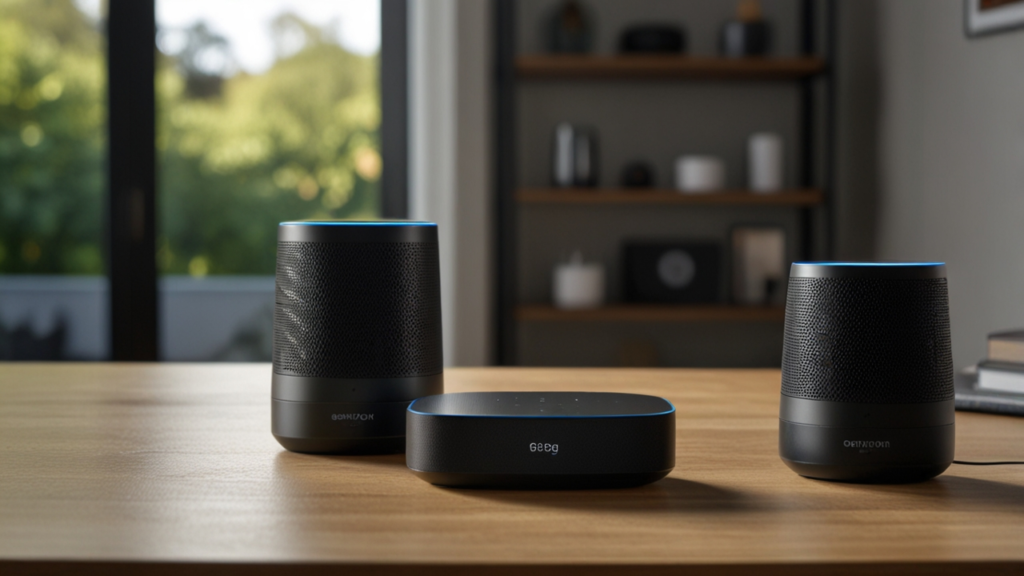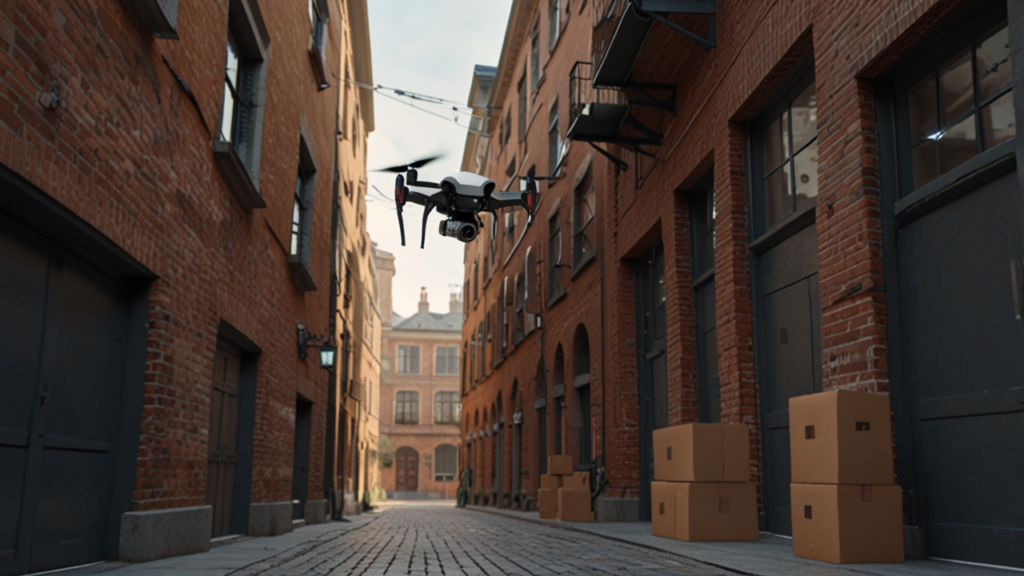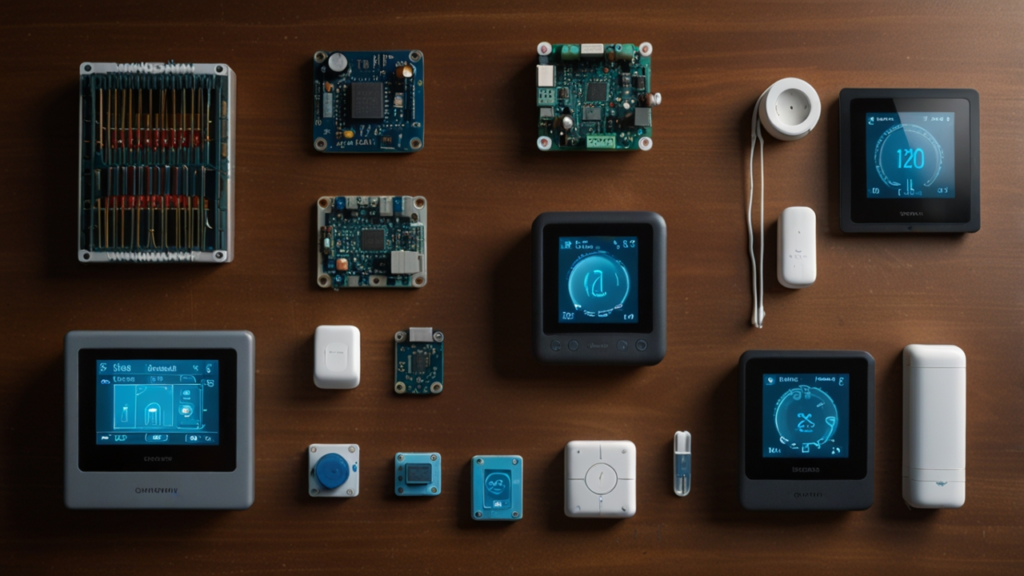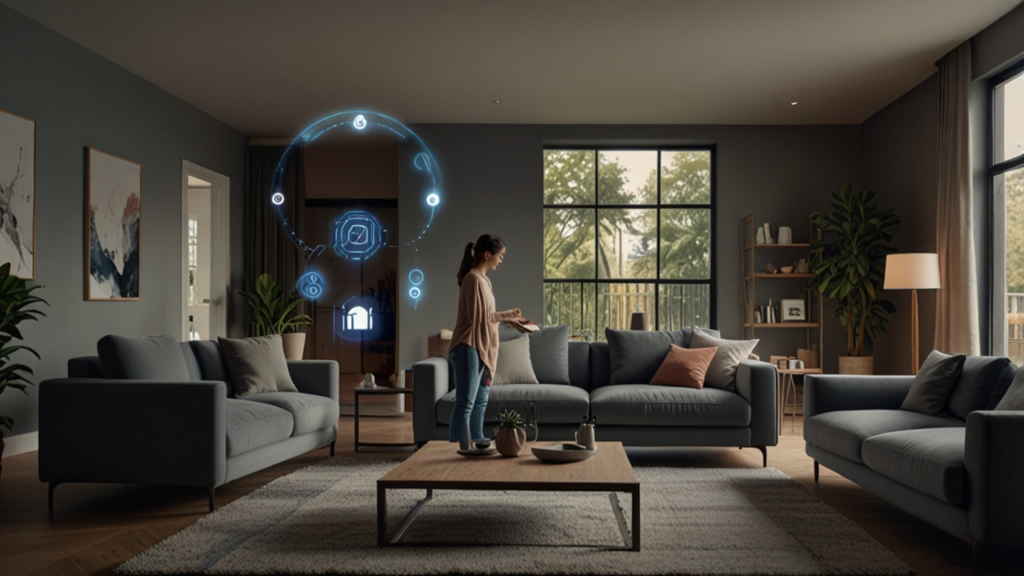Smart Speakers Evolution 2025
The world of smart technology is continuously evolving, and today we explore how smart speakers have grown from a basic gadget into a full-fledged, interactive home solution. This article delves into their evolution, current market trends, and future prospects for innovation. You are invited to learn how these devices are reshaping our daily lives.
Over the past decade, smart speakers have transformed from mere voice-controlled assistants into sophisticated hubs that integrate numerous household systems. Their rapid development is supported by advances in miniaturization, artificial intelligence, and improved connectivity. What do you think has been the most groundbreaking step in their evolution?
Our discussion will provide technical insights alongside accessible language to explain complex concepts. We will also share surprising statistics and engaging case studies that highlight the impact these devices have on modern homes. Have you experienced the convenience of this technology personally?
Table of Contents
Introduction to Smart Speakers
Smart speakers are at the heart of modern digital living. They blend communication, entertainment, and control over home systems into a single device. In today’s connected era, these systems offer powerful tools for managing daily routines.
Features and Capabilities
Smart speakers provide access to a wealth of information and entertainment through voice commands. They combine advanced microphone arrays with built-in artificial intelligence to understand and respond to your requests. For example, when you ask about the weather, the device processes your question locally before connecting to cloud services, ensuring you receive accurate data quickly. This integration of hardware and software demonstrates thoughtful design and technological progress. Have you ever marveled at how these devices can answer complex queries?
Moreover, these speakers are built with multiple sensors and connectivity options. Their operating systems continuously learn from user interactions to enhance performance over time. The synergy between deep learning and cloud-based intelligence is well documented, as evidenced by studies available on detailed study on smart speaker statistics [Scoop]. Can you imagine the endless possibilities when these features are combined?
Market Context and Adoption
Recent trends show that almost half of U.S. adults use smart speakers in their homes. The technology has moved from an experimental phase into mainstream usage. Such widespread adoption is fueled by continuous improvements in design and functionality.
Consumer enthusiasm remains high, with robust market projections supporting further investment by tech giants. Data indicates that the smart speaker market generated around $14.36 billion in revenue in 2024, and it is expected to reach $19.01 billion in 2025. For more insights, check out research from market research on global trends [The Business Research Company]. Could these figures signal the dawn of even smarter home integration?
Evolution and History of Smart Speakers
The journey of these devices began with simple smartphone integrations before transitioning into dedicated hardware. Early voice assistants like Siri, Google Assistant, and Cortana set the stage for more complex systems. Over time, physical devices were introduced to bring these capabilities into our living spaces.
From Mobile Assistants to Home Devices
Initially, voice assistants were limited to the smartphones that carried them, but the evolution quickly moved towards standalone devices. Amazon’s introduction of the Echo started this transformation. Soon, other major players such as Google and Apple entered the market with devices like Google Home and HomePod, respectively. This transition marked a significant milestone in how ambient computing shifted from a concept to everyday reality.
These advancements were driven by critical improvements in natural language processing and voice recognition technologies. According to experts referenced on industry analysis on smart speakers [Consegic Business Intelligence], continuous learning from user interaction has directly contributed to the increased reliability of these devices. Do you see the connection between mobile technology and the evolution of home systems?
Milestones and Market Dynamics
Historically, the emergence of dedicated smart speaker hardware marked a significant turning point in consumer technology. Since 2017, smart home devices have grown from 87 million to an anticipated 388 million units within five years. This surge underscores the rapid market transition from niche innovation to a mainstream necessity.
Industry case studies and market projections have tracked these movements closely. For instance, the CAGR of 32.4% from 2024 to 2025 is a testament to refined device capabilities and increasing consumer trust. For a deeper dive into these figures, visit voice search statistics [Invoca]. What do you think will be the next historical milestone for these devices?
How Voice Assistant Enhances Smart Speakers
Voice assistants have revolutionized the way smart speakers function by enabling interactive and intuitive user experiences. Their role goes beyond simple command execution to include contextual understanding and personalized feedback. These advancements bring a new level of convenience to everyday life.
Enhanced User Interactions
The integration of voice assistants into smart speakers has drastically improved their usability. With improved voice recognition algorithms, these speakers can understand diverse accents and modes of speech. Users now experience smoother interactions that feel almost conversational, which is a leap from the clunky commands of earlier models. Detailed information on these improvements is available on in-depth voice assistant market research [NextMSC]. Have you noticed how natural your interactions feel when you talk to your device?
Additionally, these devices use artificial intelligence to continually adapt, refining their responses based on past interactions. This dynamic process of continuous learning ensures each user receives a personalized experience. How might this individualized attention affect your daily routines?
Integration with Home Ecosystems
Voice assistants serve as the central brains behind smart home control, allowing users to manage lighting, temperature, and security effortlessly. Their ability to coordinate various systems enhances overall home intelligence, making tasks more streamlined. With functionalities that integrate cloud-intelligence and on-device processing, these assistants are setting high benchmarks for convenience.
Experts emphasize that after implementing voice technologies, the smart speaker market has expanded to incorporate extensive household management features. This evolution is grounded in robust cloud-computing architecture and machine learning. Could the expansion of such technology be the key to ultimate home automation?
Connected Audio Systems and Their Applications
Connected audio systems work seamlessly with smart speakers, delivering enhanced sound quality and networked functionality. These systems are not just for playback— they serve as integral parts of smart home living. They allow for synchronized audio across multiple rooms and support interactive user engagements.
Technical Architecture and Design
At the core, connected audio systems rely on advancements in audio engineering and signal processing. Sophisticated speaker systems produce crystal clear sound while digital signal processors ensure that voice commands are registered accurately even in noisy environments. This design supports immersive experiences in both music playback and interactive communication. For instance, research from voice search insights [Invoca] shows significant usage growth in everyday applications. Does the idea of high-fidelity audio that also responds to your commands excite you?
Moreover, synchronization across devices is achieved through reliable cloud-based intelligence and rapid wireless connectivity. These advancements have allowed connected audio systems to become a cornerstone of modern home entertainment. How do you think synchronized audio could enhance your living experience?
Practical Applications and Use Cases
The integration of smart speakers with connected audio systems has found applications spanning from home theaters to interactive learning environments. Industries including education, retail, and hospitality have adopted these systems to improve customer engagement. For example, a hotel chain might use this technology to offer personalized guest experiences, combining ambient sound with interactive controls.
Additionally, connected audio is essential for implementing voice-controlled home automation. This technology enables seamless transitions between different media sources and full integration with smart home networks. Where do you see the most promising application of such systems in your daily life?
Real-World Case Studies of Smart Speakers
Real-world implementations reveal how smart speakers are transforming operations and customer engagements. Case studies from multinational corporations and local businesses demonstrate the versatility of these devices. From entertainment to customer service, the examples are both varied and inspiring.
Corporate and Telecom Applications
Companies like Amazon have shown that smart speakers can be much more than simple music players. At a Futuresource Consulting event, Theunis Scheepers shared how Alexa’s personality expanded its usability. For example, Alexa told over 100 million jokes in a year and even sang millions of birthday songs—showing that these devices can also build emotional connections with users. This novelty has spurred new ways to interact with technology and create memorable experiences. Have you ever interacted with a device that tried to entertain you as much as it assisted you?
In the telecommunications realm, voice assistants have been used to streamline customer support. Call centers deployed these solutions to answer queries, manage customer accounts, and even troubleshoot technical issues. The companies observed significant boosts in efficiency and customer satisfaction. What improvements could you envision if your own customer service integrated similar smart innovations?
Comparison Table of Notable Implementations
The table below highlights several case studies showcasing how smart speakers have been adapted across diverse industries:
Comprehensive Comparison of Case Studies
| Example | Application | Impact | Region |
|---|---|---|---|
| Amazon Alexa | Entertainment & Customer Service | Enhanced user engagement | Global |
| Google Home | Home Automation | Seamless integration | North America |
| Apple HomePod | Music & Voice Control | High audio fidelity | Europe |
| Telecom Voice Assistants | Customer Support | 24/7 query handling | Global |
| Retail Interactive Kiosks | In-store Assistance | Increased sales conversion | Asia Pacific |
These examples not only demonstrate technical capabilities but also their broader impact on business efficiency and customer satisfaction. For more detailed industry analysis, refer to research available on smart speakers market insights [Consegic Business Intelligence]. What lessons from these case studies resonate with you?
Ambient Computing in Modern Smart Speakers Solutions
Ambient computing redefines how devices blend into our everyday environments. By integrating advanced sensors and context-aware algorithms, these systems operate quietly and intelligently in the background. This creates a natural, unobtrusive interface for managing home systems.
Technical Innovations Driving Ambient Experience
Modern smart speakers harness cutting-edge audio processing techniques and on-device AI to achieve ambient computing. Innovations such as 3D audio processing create immersive soundscapes that adjust based on room acoustics. Moreover, features like acoustic scene analysis enable these devices to respond accurately even in challenging environments. Such advancements are continuously discussed on platforms like voice assistant market reports [Verified Market Research]. Do you consider these technical improvements crucial for your home experience?
The hardware and software synergy ensures that these devices not only produce high-quality sound but also interact naturally with human users. The integration of multi-modal inputs—like gesture and touch—further elevates functionality. How might the presence of an ambient system change your daily interaction with technology?
User Experience and Interoperability
Ambient computing allows smart speakers to integrate seamlessly with other smart devices in the home. This interoperability creates a unified ecosystem where appliances, lighting, and security systems communicate effortlessly. The result is a more intuitive control over everyday functions. Users benefit from this cohesion by experiencing fewer disruptions and more efficient energy use.
Such interconnected environments have been proven to increase convenience and reduce user frustration. Industry experts generally accept that ambient systems create the ideal ecosystem for smart living. How do you envision your home benefiting from a fully interoperable system?
Future Trends: Home Intelligence and Beyond
Looking into the future, the road ahead for smart speakers is paved with exciting innovations. Emerging trends point to even greater levels of home automation and integrated intelligence. Forward-thinking companies are already exploring next-generation capabilities.
Evolving Technological Landscapes
Future iterations of smart speakers are expected to incorporate multi-modal interfaces that go beyond voice—integrating gesture, touch, and visual inputs. Enhanced machine learning algorithms will improve contextual understanding, enabling devices to accurately interpret complex commands in real time. Market projections show revenue growth from $22 billion in 2025 to over $100 billion by 2032. These forecasts are available through various research sources, including detailed data on smart speaker trends [Scoop]. What innovations are you most excited to see in your home?
Furthermore, increased on-device processing will minimize reliance on cloud computing, addressing privacy and latency concerns. With partnerships forming between technology providers globally, the integration of smart systems will reach new heights. Do you believe these advancements will transform your home into a smarter environment?
Societal and Economic Impacts
As smart speakers continue to evolve, they will influence both consumer lifestyles and business models. Companies are already implementing these technologies in professional environments, contributing to more efficient operations and improved customer support. Alongside enhanced functionality, data suggests that user engagement is climbing steadily, with projections pointing to 75% household penetration by 2025. This growth is generally accepted by analysts and is supported by current market research.
The economic impact is vast; businesses can streamline operations and improve service quality with intelligent device integration. These shifts will further blur the line between living spaces and productive environments. How do you think these changes might affect your daily work or leisure at home?
Design Beyond Boundaries
In our journey through technological evolution, it is sometimes valuable to take a step back and consider the artistic and creative side of innovation. Design thinking offers a remarkable perspective that blends functionality with human-centered artistry. When we challenge conventional methods and embrace interdisciplinary collaboration, new opportunities emerge that empower creativity and drive progress.
One unique insight is the importance of embracing failure as a tool for creative problem-solving. Designers who explore unconventional solutions often discover methods that not only solve a problem but also inspire entirely new approaches. This approach advocates for flexibility and a willingness to iterate until a breakthrough is achieved.
Many industries have demonstrated that when creativity is prioritized, the resulting innovations can reshape the market. By encouraging teams to step outside their standard frameworks, companies can develop solutions that better serve human needs and expectations. The process is both iterative and holistic, focusing on small refinements that contribute to a larger, more transformative vision.
This creative methodology has been a catalyst for change in sectors ranging from product design and architecture to digital innovation and user interface development. It requires an openness to diverse perspectives, continuous learning, and a passion for integrating art with science. Have you ever considered how an out-of-the-box approach might enhance your problem-solving techniques?
The art of creative problem-solving can ultimately lead to products that are not only more intuitively aligned with everyday use but that also push the boundaries of what technology can achieve. Embracing these principles encourages more resilient and adaptive solutions, setting the stage for a future where innovation and design merge seamlessly.
FAQ
What defines a smart speaker?
Smart speakers are voice-activated devices that combine advanced hardware and cloud-based software to execute commands, provide feedback, and integrate with other home systems. They process voice inputs using natural language processing and deliver results through audio outputs.
How did smart speaker technology evolve?
The technology evolved from simple smartphone-based voice assistants to dedicated home devices. Innovations in AI, miniaturization, and cloud computing played pivotal roles in advancing smart speaker capabilities.
What role do voice assistants play in these systems?
Voice assistants enhance smart speakers by enabling natural, conversational interactions. They power the response generation and help integrate multiple functions related to home management and entertainment.
How do connected audio systems work with smart speakers?
Connected audio systems integrate with smart speakers to deliver high-quality sound and synchronized playback across multiple devices. They rely on advanced signal processing and cloud intelligence to ensure a seamless experience.
What can we expect in the future of these devices?
The future holds advancements like multi-modal interfaces, enhanced on-device processing, and broader ecosystem integration. These innovations are set to drive higher efficiency, better user experiences, and a more interconnected home environment.
Conclusion
The evolution of smart speakers illustrates an exciting trajectory from simple voice-based assistants to complex, integrated home solutions. Their journey reflects rapid innovation, ever-evolving technology, and expanding applications across consumer and corporate environments. Have you experienced how a smart speaker can transform your daily routine?
As we look ahead, these devices will continue to redefine home intelligence, proving to be more than simple gadgets but integral parts of our connected world. We invite you to share your thoughts and experiences, and if you have further questions, please Contact us. For more information on emerging innovations in this field, visit our Smart Tech section.
What emerging feature are you most excited to see implemented in future systems?
Discover more from Fabelo.io
Subscribe to get the latest posts sent to your email.



